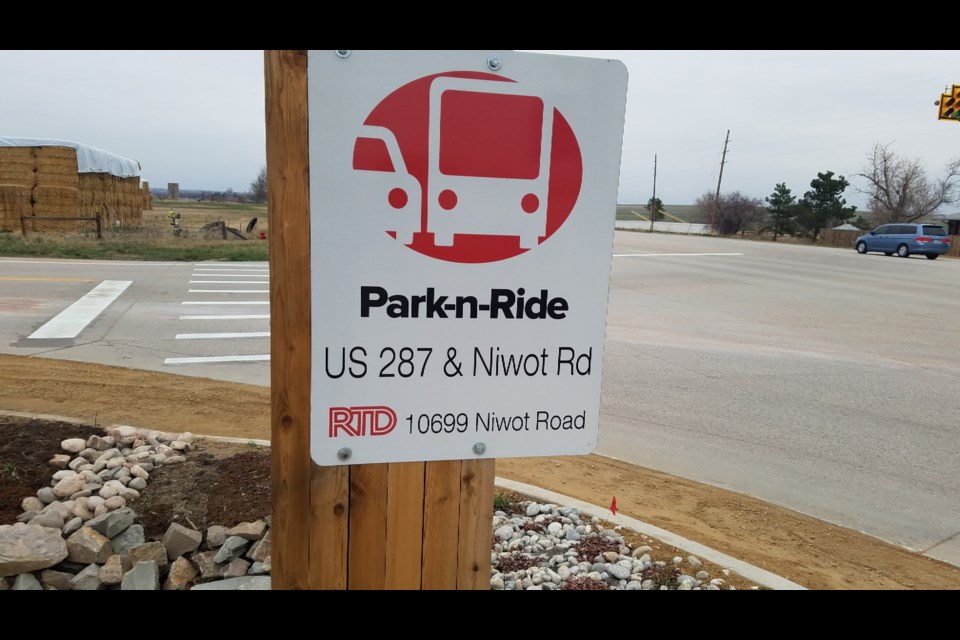The current Colo. 287 bus alignment that stretches throughout Longmont will go away under a plan to introduce enhanced bus service on the highway from Broomfield to Colo.66 north of the city.
Planners favor using a planned Coffman Street transitway as the best alternative to bring Bus Rapid Transit, or BRT, into Longmont, according to Boulder County and city of Longmont officials. The Coffman Street busway is scheduled to be ready for use in 2024, said Phil Greenwald, Longmont’s principal transportation manager.
Alternative routes that will accommodate BRT on Colo. 287, were unveiled Wednesday night during a virtual update on the project. Boulder County is heading up the BRT feasibility study.
The study is scheduled to be finished by August, said Jeff Butts, multimodal planner for Boulder County. A phase examining other aspects of the project — including safety concerns — will get underway by the end of the year, Butts said.
There is no timeline yet for actual construction on the corridor. Boulder County must still address the best way to fund the $56 million proposal, Butts said in a November virtual meeting.
The highway was deemed ideal for BRT in a 2014 Regional Transportation District study, which said the buses would be the best way to handle the burgeoning growth on the corridor, Butts said.
BRT would use dedicated lanes independent of normal traffic while passengers could buy tickets before boarding the buses through multiple doors, said Nick VanderKwaak, a transportation consultant working on the project.
“The goal is to increase the efficiency, attractiveness and utilization of transit” on the corridor, VanderKwaak said during the virtual meeting.
Four alternatives are being evaluated in Longmont as part of the Colo. 287 study, he said via email.
Alternative 1: Main Street alignment would stay on Colo. 287 through Longmont. VanderKwaak said that feedback from a Stakeholder Working Group and city of Longmont planners has eliminated this option from further consideration in favor of a planned Coffman Street transitway.
Alternative 2: Pratt Parkway/Coffman Street alignment leaves Colo. 287 at Boston Avenue, follows Pratt Parkway using the grade separated railroad crossing and runs along the planned transitway on Coffman Street until 11th Avenue where it joins back with U.S. 287.
Alternative 3: Coffman Street from First Avenue to 11th Avenue alignment leaves Colo. 287 between First Avenue and 11th Avenue and runs along the planned transitway on Coffman Street.
Alternative 4: Coffman Street from Third Avenue to Ninth Avenue alignment leaves Colo. 287 between Third and Ninth Avenue. This alignment uses the planned transitway to Coffman Street and maintains the greatest portion of the Colo. 287 route than other alignments, VanderKwaak said.
Coffman Street is seen as a multi-modal corridor, including wider sidewalks, tree lawns, protected bike lanes, on-street parking, one travel lane in each direction and center-running bus lanes, according to the city of Longmont website.
The preliminary design shows center-running bus lanes on Coffman Street, though the current design will also propose “side running” bus lanes as another alternative, Greenwald said.
Plans for Coffman Street’s redesign will go to the public later this spring or early summer for some additional feedback, Greenwald said. The city will also send out a survey in the next few weeks asking for public input, including from adjacent property and business owners on the project, he said.
The project must meet certain requirements to be eligible for grant funding, Greenwald said.
The Coffman Street Busway project is in the Denver Regional Council of Governments Transportation Improvement Program, TIP, and is fully funded at $6.9 million — with Longmont chipping in $150,000 in matching funds, Greenwald said.
Construction is expected to begin in late 2023 and should be open to the public in 2024, he said.
Correction: The project must meet certain requirements for grand funding. The original article stated does, but the public decision still needs to be made before officials can determine if the project will still qualify.



